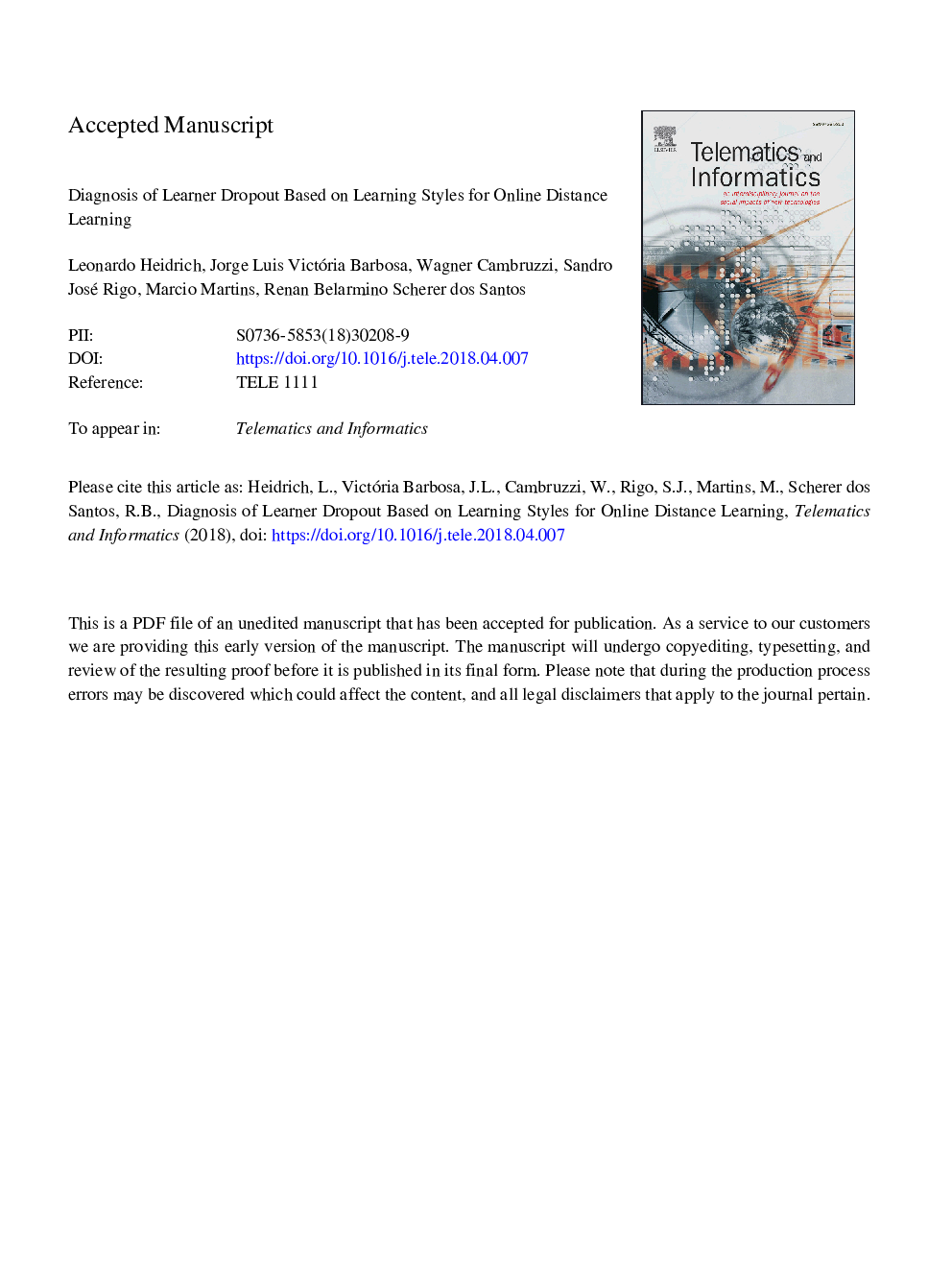| Article ID | Journal | Published Year | Pages | File Type |
|---|---|---|---|---|
| 6889475 | Telematics and Informatics | 2018 | 31 Pages |
Abstract
The amount of data generated by computer systems in Online Distance Learning (ODL) contains rich information. One example of this information we define as the Learner Learning Trail (LLT), which is the sequence of interactions between the students and the virtual environment. Another example is the Learner Learning Style (LLS), which is associated with the student behavior and choices during the learning process. This information can be used to identify learner behavior and learning style. We perceived, after the study of related literature, that the research field of learner diagnosis for ODL does not apply the conjoint use of LLT and LLS. In this article, we propose a model capable of integrating data generated from the behavior of students in ODL with cognitive aspects of them, such as their Learning Styles, by crossing LLT with LLS. We also propose the CPAD method (Collect, Preprocessing, Analysis, Diagnosis), which is implemented by collecting the raw data regarding learning activities, preprocessing the data into structured time sequences, analyzing the sequences regarding the learning styles and using this analysis to diagnose the learner behavior. We selected the dropout to investigate, once the dropout rate in ODL is a real problem in universities around the world. In addition, the dropout is a student decision which can be associated with previous students behaviors. We performed a study with 202 learners to evaluate if learning styles are capable of explaining aspects of the student behavior. The results suggest that Sequential/Global learning style dimension is more capable of explaining the dropout than the other dimensions. Also, we performed four classification experiments to verify how the dimensions of Felder-Silverman Learning Style Model influence the learner diagnosis. We perceived that the Sequential/Global dimension could provide a higher accuracy average with lower variation independently of the diagnosis technique.
Keywords
Related Topics
Physical Sciences and Engineering
Computer Science
Computer Networks and Communications
Authors
Leonardo Heidrich, Jorge Luis Victória Barbosa, Wagner Cambruzzi, Sandro José Rigo, Márcio Garcia Martins, Renan Belarmino Scherer dos Santos,
